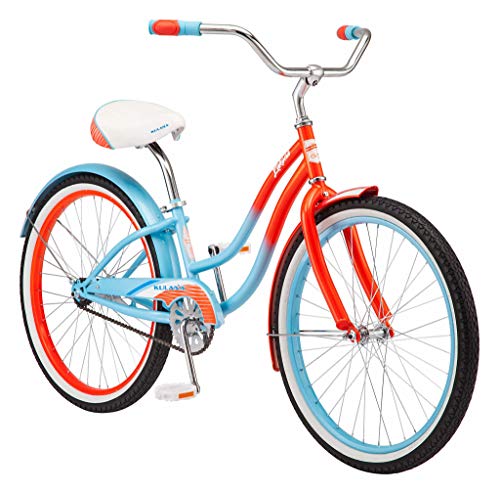- Joined
- Aug 14, 2019
- Messages
- 816
- Reaction score
- 2,223
I was asked to do a step by step of a set of wheels I'm trying to dress up a bit. As I am not very knowledgeable about bikes, please bear with me.
If you are smarter than me, you would be better off starting with a set of nice polished aluminum, or chrome rims so you can skip the "work" part and go straight to the fun part.
I'll be taking a pair of cheap Roadmaster wheels and going from plain grey,

and attempting to add a bit of flash.

This is the victim for the step by step process, the matching back wheel to the front one above.

First step is to take it apart and organize the parts,

These are the products I'll use to strip the paint,
Stripper
A small cup to pour the stripper into, I use 1oz. cups. It took 2 oz. to strip the paint off of 1 wheel.
A plastic razor blade and holder. Whoever invented these is a genius!
A small paintbrush to apply the stripper.
Gloves
A small container of water for clean up.


I applied two coats of stripper, waited about 10 minutes and the scraped it with the plastic razor. It took most of the grey off (the pile in the center of the rim), and hopefully will get the rest in the next application.

If you are smarter than me, you would be better off starting with a set of nice polished aluminum, or chrome rims so you can skip the "work" part and go straight to the fun part.
I'll be taking a pair of cheap Roadmaster wheels and going from plain grey,

and attempting to add a bit of flash.

This is the victim for the step by step process, the matching back wheel to the front one above.

First step is to take it apart and organize the parts,

These are the products I'll use to strip the paint,
Stripper
A small cup to pour the stripper into, I use 1oz. cups. It took 2 oz. to strip the paint off of 1 wheel.
A plastic razor blade and holder. Whoever invented these is a genius!
A small paintbrush to apply the stripper.
Gloves
A small container of water for clean up.


I applied two coats of stripper, waited about 10 minutes and the scraped it with the plastic razor. It took most of the grey off (the pile in the center of the rim), and hopefully will get the rest in the next application.

Last edited:
































































































